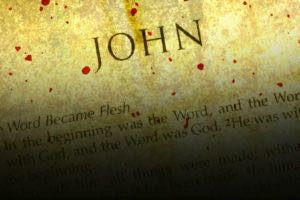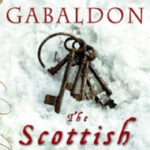The question of when the Gospel of John was written is a critical one for understanding its place within the New Testament and its significance for Christian faith. Dating this gospel helps us to ascertain its historical context, authorship, and reliability as a witness to the life and teachings of Jesus Christ. While tradition and textual clues suggest it was written after the other Gospels – Matthew, Mark, and Luke – the precise timeframe has been a subject of scholarly debate. This article delves into the compelling evidence that points towards an early date for the Gospel of John, arguing that it was composed within the first century, during the lifetime of eyewitnesses to the events it narrates.
Historical Context and Traditional View
The early Church Fathers, who were closest in time to the apostles and the writing of the New Testament, consistently indicated that John’s Gospel was the last of the four canonical Gospels to be written. This perspective is not merely based on speculation but is rooted in historical testimony and textual interpretation.
Testimony of the Church Fathers
Figures like Clement of Rome, writing in the late first or early second century, suggested John’s Gospel came after the others. Eusebius of Caesarea, in his Ecclesiastical History, quotes Clement’s view. Similarly, Irenaeus, Bishop of Lugdunum (modern-day Lyon) in the second century, explicitly stated that John published his Gospel after the other three had already been circulated. Later influential Church Fathers, including Origen, Eusebius himself, and Jerome, echoed this understanding, solidifying the traditional view that John’s Gospel held a unique place as a later, perhaps more reflective, account.
 Ancient scroll depicting the Gospel of John, a New Testament book, symbolizing its historical context and authorship.
Ancient scroll depicting the Gospel of John, a New Testament book, symbolizing its historical context and authorship.
Internal Evidence Suggesting John Was Written After Other Gospels
Beyond the testimony of early church leaders, the text of John’s Gospel itself presents internal clues that suggest its authors assumed a degree of familiarity with the narratives found in Matthew, Mark, and Luke. This is evident in how John introduces key figures and events.
Assumed Knowledge of the Apostles
In the Synoptic Gospels (Matthew, Mark, and Luke), the introduction of Jesus’ disciples is often accompanied by details about their background and calling. John, in contrast, often mentions the disciples without such introductions, acting as if the reader already possesses this foundational knowledge. For instance, in John 6:67, Jesus speaks to “the twelve,” a specific group within a larger body of disciples. John doesn’t elaborate on who these twelve are or their significance, implying that his audience is already informed about this core group of apostles, likely from reading the earlier Gospels.
Assumed Knowledge of John the Baptist
Similarly, John’s Gospel refers to John the Baptist in a manner suggesting prior knowledge on the part of the reader. Unlike the Synoptic Gospels which provide extensive details about John the Baptist’s ministry, lineage, and role, the Gospel of John often simply calls him “John.” The assumption is that readers are already acquainted with John the Baptist’s identity and importance. Furthermore, John 3:24 mentions that John the Baptist had “not yet been thrown in prison,” a detail that would be more impactful if the audience was already aware of his imprisonment and eventual execution, events detailed in the Synoptic Gospels.
Evidence for an Early Dating of the Gospel of John
Despite indications that John may have been written after the Synoptic Gospels, compelling evidence strongly suggests an early date of composition, well within the first century and before the destruction of Jerusalem in 70 AD. This early dating is crucial for affirming the Gospel’s reliability as an eyewitness account.
Absence of the Olivet Discourse and Temple Destruction
One striking piece of evidence for an early date is the absence of the Olivet Discourse and any mention of the destruction of the Jewish Temple in John’s Gospel. The Olivet Discourse, found in Matthew 24, Mark 13, and Luke 21, contains Jesus’ prophecies about the Temple’s destruction. Given the immense significance of this event and its fulfillment in 70 AD, it would be expected that a Gospel written after this date, especially one aiming to demonstrate Jesus’ prophetic abilities, would include or at least allude to these prophecies and their fulfillment. The omission in John’s Gospel suggests it was written before 70 AD, as an author writing later would likely have included such a powerful confirmation of Jesus’ predictions, similar to how the Epistle of Barnabas, written after 70 AD, mentions the Temple’s destruction.
Use of Primitive Terms
John’s Gospel utilizes terminology consistent with the earliest period of Christianity. For example, it consistently refers to Jesus’ closest followers as “disciples” rather than “apostles,” a term that became more prevalent later, particularly in the Book of Acts and Pauline epistles. Luke, in Acts, frequently uses “apostles” to denote this group. John’s preference for “disciples” suggests a writing period closer to the initial stages of the Christian movement when “disciple” was the more common designation.
Description of the Pool of Bethesda in Present Tense
In John 5:2, the Gospel describes the Pool of Bethesda in Jerusalem using the present tense verb “is” (ἐστιν in Greek): “Now there is in Jerusalem by the Sheep Gate a pool, which is called in Hebrew, Bethesda, having five porches.” This present tense description is noteworthy because the Pool of Bethesda, like much of Jerusalem, was likely destroyed or significantly altered during the Roman siege and destruction of the city in 70 AD. Using the present tense suggests that the author was writing before this destruction, when the pool still existed as described. Furthermore, the narrative assumes a reader’s familiarity with the pool’s location and some of its customs, indicating a contemporary audience in Jerusalem or Judea before the events of 70 AD scattered the population. The later addition of verse 3 in some manuscripts, attempting to explain the stirring of the waters by an angel, points to a time when the original context was no longer readily understood, further supporting an early composition date before the pool’s destruction and the disruption of Jerusalem’s community.
Similarities to the Dead Sea Scrolls
Scholarly analysis has revealed notable thematic and conceptual parallels between John’s Gospel and the Dead Sea Scrolls, texts produced by a Jewish sect in Qumran and dating back to the first century. These similarities encompass concepts like dualism (light vs. darkness), predestination, and messianic expectations. While not proving a direct link, these parallels suggest that John’s Gospel shares a similar intellectual and theological environment with first-century Jewish thought, as reflected in the Dead Sea Scrolls. This strengthens the case for a first-century origin for John’s Gospel.
Papyrus Evidence
Physical evidence from ancient papyri also supports an early date. The John Rylands Papyrus fragment (P52), containing a portion of John 18, is dated to around 125 AD. Crucially, this fragment was discovered in Egypt, far from the likely origin of the Gospel in Palestine or Syria. Scholars estimate that it would have taken decades for the Gospel to be written, copied, disseminated, and then travel to Egypt. This implies that the original Gospel of John must have been written significantly earlier than 125 AD, pushing its composition well into the first century.
Documentary Evidence
Further documentary fragments reinforce this early timeframe. Papyrus Egerton 2, dated around 150 AD, includes narratives resembling all four Gospels, including John 5:39-47, indicating John’s Gospel was already in circulation by this time. The Muratorian Fragment, dating to approximately 180 AD, discusses the origin of John’s Gospel and mentions that John’s “fellow-disciples,” including Andrew, were still alive when he wrote. The Anti-Marcionite Prologues, dating as early as 150 AD, cite Papias as stating that John’s Gospel was revealed to the churches by John while he was “still in the body.” These documents collectively suggest that by the mid-second century, the early origin and apostolic authorship of John’s Gospel were already established and accepted.
The Death of Peter and a Narrower Timeframe
A closer examination of John’s Gospel may even allow for a more precise dating within the first century. In John 21:20-23, there is a passage that reflects on a saying about the “disciple whom Jesus loved” (traditionally identified as John himself) not dying before Jesus’ return. The text explicitly addresses and corrects a misunderstanding that arose from Jesus’ words. Importantly, the passage seems to imply the death of Peter: “So the saying spread abroad among the brothers that this disciple was not to die; yet Jesus did not say to him that he was not to die, but, ‘If it is my will that he remain until I come, what is that to you?’” Peter’s martyrdom is generally dated to around 64 AD. If John’s Gospel was written with the knowledge of Peter’s death and the need to clarify the saying about the beloved disciple in light of Peter’s passing, a reasonable timeframe for its composition would be between 64 and 70 AD.
Conclusion
In conclusion, while the Gospel of John exhibits characteristics suggesting it was written with an awareness of the Synoptic Gospels, the weight of evidence strongly supports an early dating, prior to 70 AD. The absence of reference to the Temple’s destruction, the use of early Christian terminology, the present tense description of the Pool of Bethesda, parallels with the Dead Sea Scrolls, and papyrological and documentary evidence all converge to indicate a first-century origin. Furthermore, internal clues within John 21 may even narrow this timeframe to the period between 64 and 70 AD. This early dating is not just an academic point; it reinforces the Gospel of John’s reliability as a firsthand, eyewitness account, written within the living memory of those who encountered Jesus Christ, providing a powerful and authentic testimony to his life, death, and resurrection.

